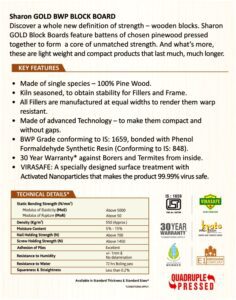

Ever wondered what makes plywood the go-to choice of construction materials?
It’s the quiet workhorse that holds our furniture together, provides a stable base for our floors, and even hides behind the walls of our homes. But what’s the secret behind its strength and durability?
But before that, let’s address the elephant in the room – why plywood? Well, you’re crafting your dream furniture or erecting a sturdy structure. What’s the one thing you need above all else? Stability, right? And that’s precisely where plywood swoops in to save the day. On such a note, let’s dive into the science behind its layered construction and stability.
At the heart of plywood’s strength lies its layered construction. Each layer, or ply, is oriented perpendicular to the adjacent ones. This arrangement is a game-changer when it comes to stability.
Imagine a stack of papers. It’s easy to bend or tear a single sheet, but stacking them together creates a more resilient structure. Similarly, stacking different layers of plywood makes it resistant to warping, cracking, and splitting – common issues faced by solid wood.
Now, let’s talk about the glue that binds it all together – literally. Plywood relies on a strong adhesive to bond its layers, and the type of glue used plays a crucial role in determining the panel’s overall performance.
Phenol-formaldehyde and melamine-urea-formaldehyde are two commonly used adhesives in plywood. These adhesives not only provide excellent bonding strength but also contribute to the plywood’s resistance against moisture, ensuring durability even in challenging environments.
Wood has a natural tendency to expand and contract with changes in temperature and humidity. This characteristic can wreak havoc on construction materials, leading to deformities and structural instability. Plywood, however, tackles this issue head-on.
The cross-grain arrangement of plywood layers counteracts the natural movement of wood. When one layer expands, the adjacent layer contracts and vice versa. This dynamic equilibrium minimises the overall movement of the plywood, making it a reliable choice for various applications, from furniture to flooring.
One of plywood’s standout features is its exceptional load-bearing capacity. The layered construction distributes weight evenly across the panel, ensuring that it can handle significant loads without buckling or sagging. This makes plywood a preferred choice for constructing shelves, cabinets, and even structural elements in buildings.
The ability to support heavy loads is especially crucial in construction, where materials are expected to withstand the test of time and environmental stresses. Plywood’s layered structure provides the strength needed to meet these challenges head-on.
Not all plywood is created equal. Different projects demand different grades of plywood, each with its specific characteristics and intended use. Plywood is graded based on factors like appearance, durability and the number of defects.
For instance, A-grade plywood is top-tier, with a smooth and unblemished surface, suitable for high-end furniture and visible applications. On the other hand, lower-grade plywood may have more imperfections but remains perfectly suited for structural purposes where appearance takes a back seat to functionality.
In an era where sustainability is a buzzword, plywood stands tall as an eco-friendly option. The manufacturing process of plywood often utilises fast-growing, renewable wood species, reducing the strain on natural resources. Additionally, the efficiency of plywood production minimises waste, making it a more sustainable choice compared to some traditional lumber options.
As we wrap up our journey through the layers of plywood, it’s clear that this unassuming material holds more science and engineering than meets the eye. The layered construction, cross-lamination, and strategic use of adhesives come together to create a powerhouse of stability and strength.
Next time you rest your coffee mug on a plywood table or admire the sleek curves of a plywood chair, remember that there’s more than meets the eye. Plywood is not just about the wood, it’s about the layers, the science and the craftsmanship that elevate it to a status of stability beyond compare.

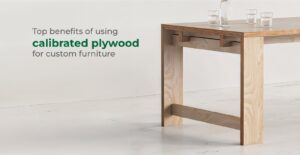

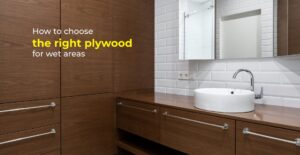
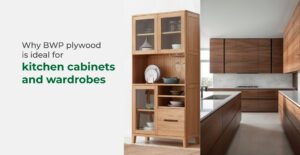


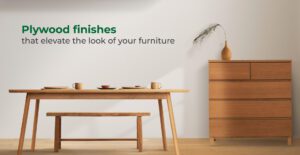


Users understand that SHARONPLY is committed to protecting the User’s privacy and shall take all efforts to protect any personal data provided to the Website by reasonable security safeguards against such risks as loss or unauthorised use, destruction, modification or disclosure of data, However, in case of any lapse, SHARONPLY shall not be held responsible for any effect or consequences thereof. The Website uses cookies to track usage of the path of the User. Since most web browsers automatically accept cookies, User can edit User’s browser options to block them if User does not want the Website to use cookies to track usage of the path of the User.
SHARONPLY undertakes not to disclose, except as otherwise provided, the personal information provided by the User to any person, unless such action is necessary to: –
By filling up any form on the Website User automatically grants SHARONPLY a royalty-free, perpetual, irrevocable non-exclusive license to use, reproduce, publish, edit, distribute, and publicly display the information given in the form and to sublicense such rights.
Any queries regarding the SHARONPLY’s privacy policy, may be sent to admin@sharonply.com.
